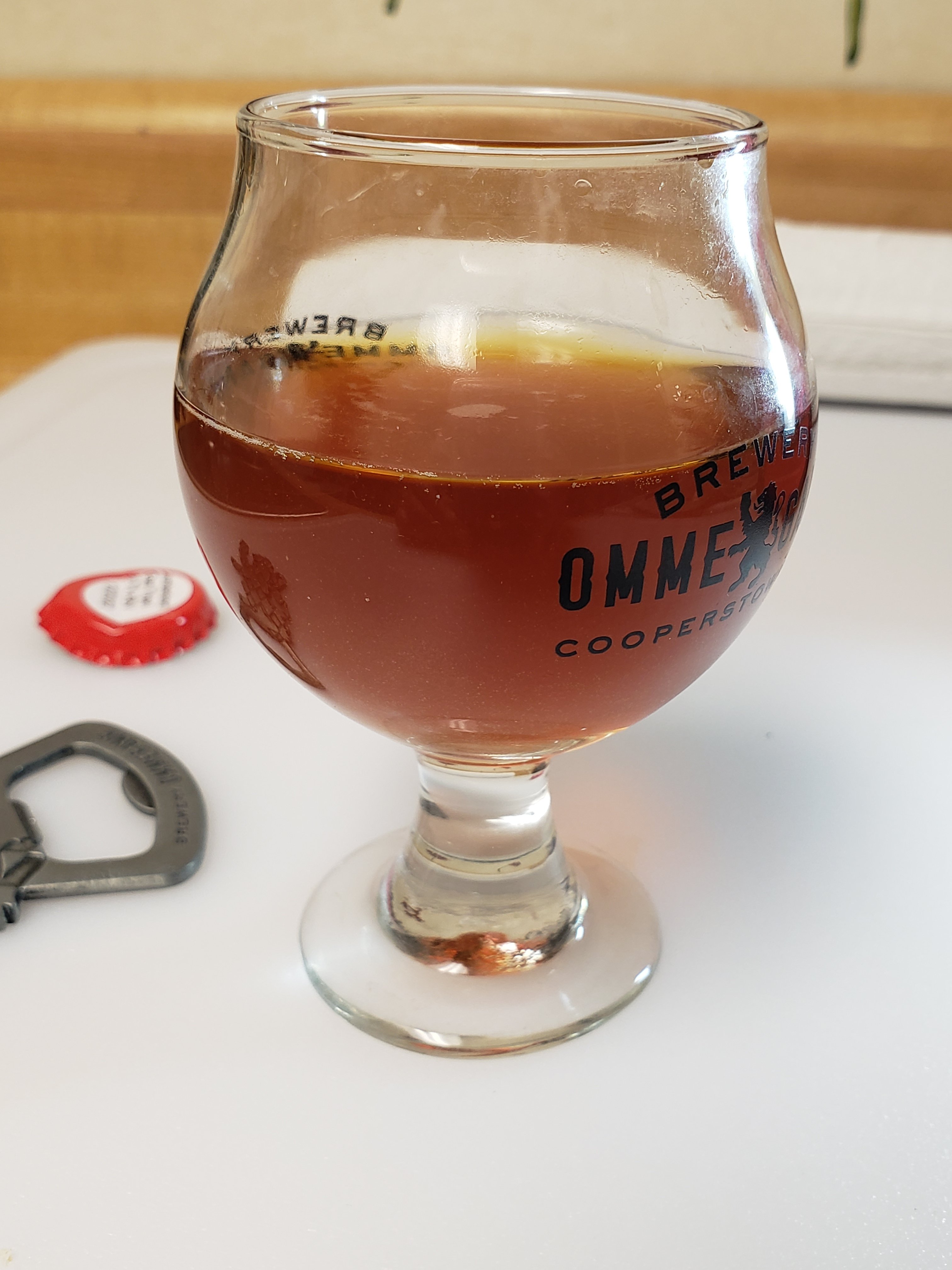_Keven
Well-Known Member
- Joined
- Nov 17, 2023
- Messages
- 56
- Reaction score
- 21
Last year we tried a Belgian tripel extract recipe but it called for mostly LME, which we believe was the cause of our brew coming out much darker than expected (it looked more like a dubbel). So this time around we're thinking of trying all DME as well as adding dextrose to the recipe. This is what I have so far (I used brewer's friend to come up with the recipe). This is a 5 gallon batch btw
8 lbs Briess DME Pilsen light
1 lb Belgian Candi sugar clear
2 lbs dextrose
0.5 lb Briess Caramel Malt 10L (steeping grain)
3 oz Saaz US (20 minutes)
2 packets of Wyeast 1214
Few things to note:
The expected OG shows 1.087, FG is 1.016 (ABV 9.3%), IBUs: 17
I've heard that many people add sugars to the Belgian beers to get a higher attenuation rate, and in this case I decided to add more (subbing out some DME) because from the brewer's friend recipe calculator If I were to do 10 lbs DME and 1 LB candi sugar (or dextrose) the final gravity is expected to be 1.020 which is a tad bit higher than I'd like. Subbing in the extra dextrose the final gravity is predicted to be 1.015 which is a bit better.
I'd love to hear what everybody thinks of this recipe so far, I haven't purchased anything yet so definitely open to modifying it as needed.
8 lbs Briess DME Pilsen light
1 lb Belgian Candi sugar clear
2 lbs dextrose
0.5 lb Briess Caramel Malt 10L (steeping grain)
3 oz Saaz US (20 minutes)
2 packets of Wyeast 1214
Few things to note:
The expected OG shows 1.087, FG is 1.016 (ABV 9.3%), IBUs: 17
I've heard that many people add sugars to the Belgian beers to get a higher attenuation rate, and in this case I decided to add more (subbing out some DME) because from the brewer's friend recipe calculator If I were to do 10 lbs DME and 1 LB candi sugar (or dextrose) the final gravity is expected to be 1.020 which is a tad bit higher than I'd like. Subbing in the extra dextrose the final gravity is predicted to be 1.015 which is a bit better.
I'd love to hear what everybody thinks of this recipe so far, I haven't purchased anything yet so definitely open to modifying it as needed.














![Craft A Brew - Safale S-04 Dry Yeast - Fermentis - English Ale Dry Yeast - For English and American Ales and Hard Apple Ciders - Ingredients for Home Brewing - Beer Making Supplies - [1 Pack]](https://m.media-amazon.com/images/I/41fVGNh6JfL._SL500_.jpg)











































